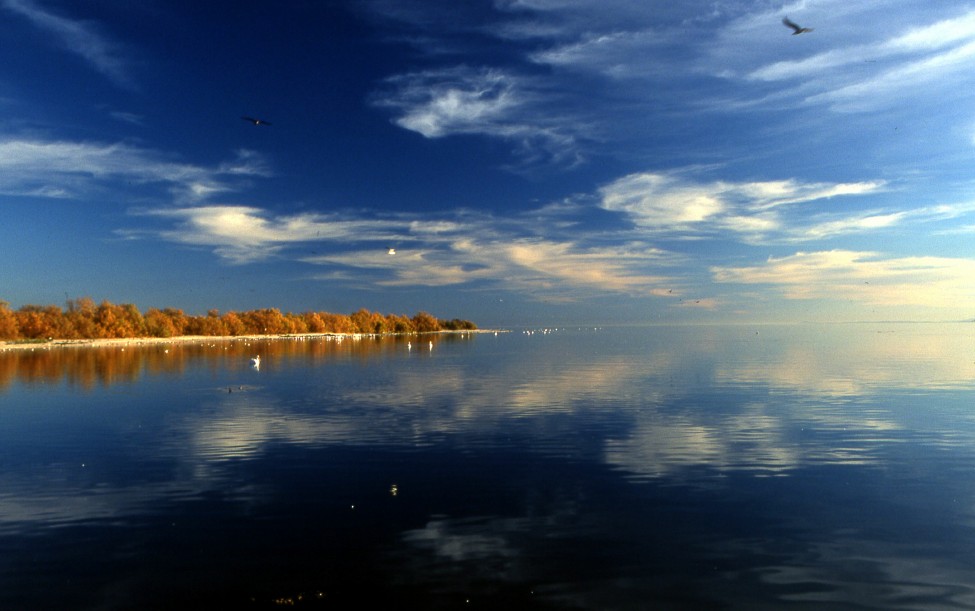
What) The Salton
Sea is a saline, endorheic rift lake located directly on the
San Andreas Fault. The lake occupies the lowest elevations of
the Salton Sink in the Colorado Desert of Riverside and
Imperial Counties in Southern California. Like Death Valley,
it is located below sea level, with the current surface of the
Salton Sea at 226 ft (69 m) below sea level. The deepest area
of the sea is 5 ft (1.5 m) higher than the lowest point of
Death Valley. The lake covers a surface area of approximately
376 sq mi (970 km2) making it the largest in California. While
it varies in dimensions and area with changes in agricultural
runoff and rain, it averages 15 mi (24 km) by 35 mi (56 km),
with a maximum depth of 52 ft.
As a result, the Salton Sink or Salton
Basin has had a long history of alternately being occupied by
a fresh water lake and being a dry, empty desert basin, all
according to random river flows, and the balance between
inflow and evaporative loss. A lake would exist only when it
was replenished by the river and rainfall, a cycle that
repeated itself countless times over hundreds of thousands of
years - most recently when the lake was recreated in
1905. The creation of the Salton Sea of today started in
1905, when heavy rainfall and snow melt caused the Colorado
River to swell, overrunning a set of head gates for the Alamo
Canal. The resulting flood poured down the canal and breached
an Imperial Valley dike, eroding two watercourses, the New
River in the west, and the Alamo River in the east, each about
60 miles (97 km) long. These two newly created rivers carried
the entire volume of the Colorado River into the Salton Sink,
filling it in approximately two years. The Southern Pacific
Railroad attempted to stop the flooding by dumping earth into
the head gates area, but the effort was not fast enough, and
as the river eroded deeper and deeper into the dry desert sand
of the Imperial Valley, a massive waterfall was created that
started to cut rapidly upstream along the main stem of the
Colorado River. This waterfall was initially 15 feet (4.6 m)
high but grew to a height of 30 feet (9.1 m) before the flow
through the breach was finally stopped. It was originally
feared that the waterfall would recede upstream into the
Nevada-Arizona area, attaining a height of up to 100 to 300
feet (30 to 91 m), from where it would be even more difficult
to fix the problem. As the basin filled, the town of Salton, a
Southern Pacific Railroad siding and Torres-Martinez Indian
land were submerged. The sudden influx of water and the lack
of any drainage from the basin resulted in the formation of
the Salton Sea. (1)
Why) Pam found the above explanation quite
interesting as it touches on her love of rivers, her desire to
know how things came to be and her fascination with the
behaviour of human beings. We didn't spend any time at
the lake but it made a nice scenic backdrop for our drive. 
I took my picture through the windshield of a moving vehicle. Fortunately, the internet exists to help us out.


